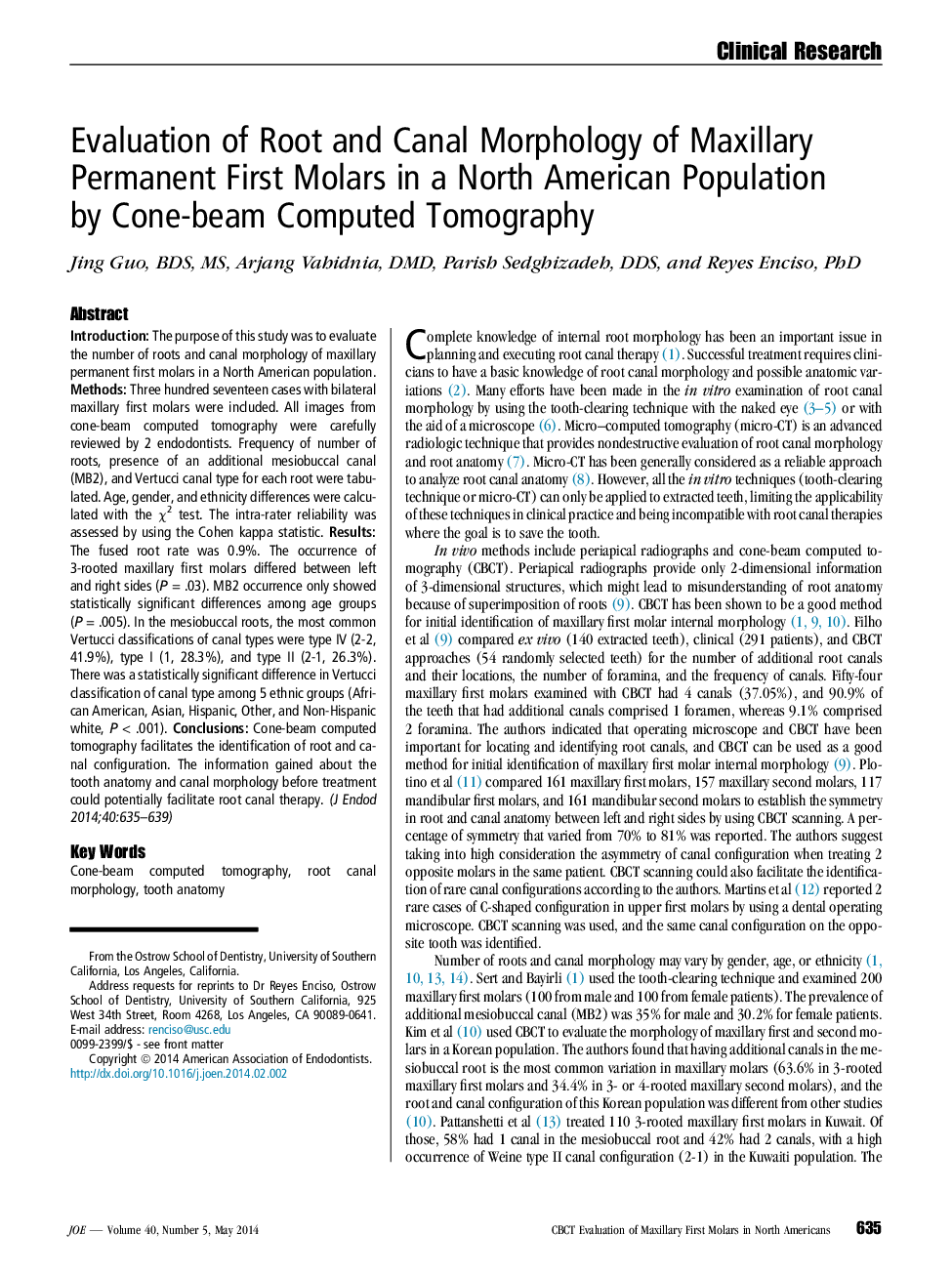| Article ID | Journal | Published Year | Pages | File Type |
|---|---|---|---|---|
| 3147894 | Journal of Endodontics | 2014 | 5 Pages |
IntroductionThe purpose of this study was to evaluate the number of roots and canal morphology of maxillary permanent first molars in a North American population.MethodsThree hundred seventeen cases with bilateral maxillary first molars were included. All images from cone-beam computed tomography were carefully reviewed by 2 endodontists. Frequency of number of roots, presence of an additional mesiobuccal canal (MB2), and Vertucci canal type for each root were tabulated. Age, gender, and ethnicity differences were calculated with the χ2 test. The intra-rater reliability was assessed by using the Cohen kappa statistic.ResultsThe fused root rate was 0.9%. The occurrence of 3-rooted maxillary first molars differed between left and right sides (P = .03). MB2 occurrence only showed statistically significant differences among age groups (P = .005). In the mesiobuccal roots, the most common Vertucci classifications of canal types were type IV (2-2, 41.9%), type I (1, 28.3%), and type II (2-1, 26.3%). There was a statistically significant difference in Vertucci classification of canal type among 5 ethnic groups (African American, Asian, Hispanic, Other, and Non-Hispanic white, P < .001).ConclusionsCone-beam computed tomography facilitates the identification of root and canal configuration. The information gained about the tooth anatomy and canal morphology before treatment could potentially facilitate root canal therapy.
